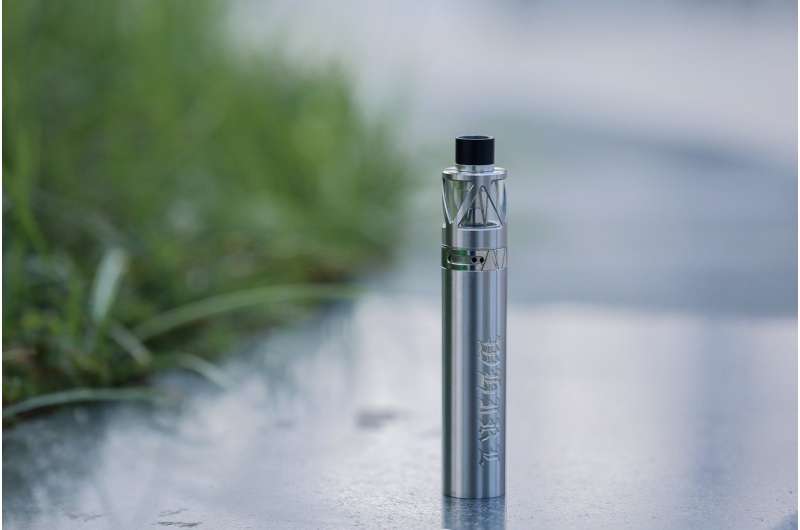
The risk that both tobacco and electronic cigarettes can pose to regular smokers’ health has been well documented, but a new UCLA study illustrates just how quickly vaping can affect the cells of even healthy younger nonsmokers.
The findings, published on Monday in JAMA Pediatrics, show that a single 30-minute vaping session can significantly increase cellular oxidative stress, which occurs when the body has an imbalance between free radicals—molecules that can cause damage to cells—and antioxidants, which fight free radicals.
“Over time, this imbalance can play a significant role in causing certain illnesses, including cardiovascular, pulmonary and neurological diseases, as well as cancer,” said the study’s senior author, Dr. Holly Middlekauff, a professor of cardiology and physiology at the David Geffen School of Medicine at UCLA.
E-cigarettes, devices that deliver nicotine with flavoring and other chemicals in a vapor rather than smoke, are seen by many as a safer alternative to regular cigarettes, but research by Middlekauff and others has demonstrated that vaping is associated with a number of adverse changes in the body that can presage future health problems.
For the current study, 32 male and female study participants, who ranged in age from 21 to 33, were divided into three groups: 11 nonsmokers, nine regular tobacco cigarette smokers and 12 regular e-cigarette smokers. Middlekauff and her colleagues collected immune cells from each individual before and after a half-hour vaping session to measure and compare changes in oxidative stress among the groups.
The researchers performed the same process during a control session in which participants spent 30 minutes “sham-vaping,” or puffing on an empty straw.
They found that in nonsmokers, oxidative stress levels were two to four times higher after the vaping session than before. The same 30-minute exposure did not lead to an increase in oxidative stress among the regular cigarette and e-cigarette smokers, the researchers noted, most likely because their baseline levels of oxidative stress were already elevated.
“We were surprised by the gravity of the effect that one vaping session can have on healthy young people, “Middlekauff said. “This brief vaping session was not dissimilar to what they may experience at a party, yet the effects were dramatic.”
The results are especially troubling, the researchers say, because the popularity of vaping continues to increase, particularly among teens and young adults. According to a 2020 study, nearly 1 in 3 high school students reported that they had used an e-cigarette during the previous month.
There is still more to be understood about what exactly causes the changes in oxidative stress levels—whether it is the nicotine or non-nicotine elements in e-cigarettes—the researchers say. Middlekauff and her team will continue to explore this question in future research.
Source: Read Full Article
